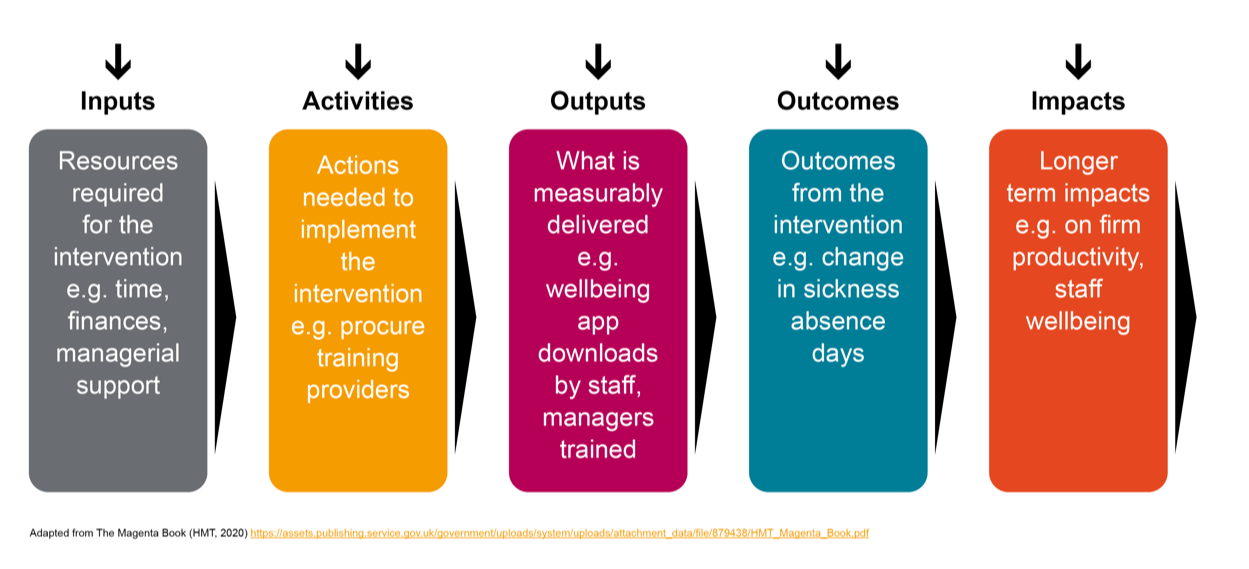The impact of the pandemic on how we work has been seismic. It’s more important than ever that leaders focus on the mental health of their people. But understanding the extent of mental health challenges faced by employees can be difficult, and so can knowing what to do next.
Our ways of working are changing. Many organisations are intending to move more permanently towards hybrid working – encouraging their people to work some of the week at home and some in the workplace. Understanding how this could affect the mental health of employees, and also the types of support that may be most effective, will help organisations and their people stay mentally healthy and productive.
Data is an invaluable tool in tackling these questions. But where do you start? The following steps can help.
Why use data?
First of all, it’s important to understand the benefits of using data. Collecting and analysing information on employee mental health enables three vital things:
- Learning – about the current state of mental health of people across your organisation; about options for supporting their mental health; and about what works, for who and under what conditions.
- Accountability – data can act as evidence for budget holders on the case for action; how resources will be used to deliver better outcomes; and what has been achieved with the investments provided; and
- Long-term support – data can strengthen the case for more or continued investment in mentally healthy working practices and policies in the future.
What data should you use?
You’re ready to get started – but what data do you need? It’s an obvious question and it may seem a tricky one.
A simple first step is to work out what data you already have. You may have access to information generated from employee surveys or usage data for resources you offer such as employee assistance programmes or external healthcare providers, for example.
Useful types of data could include:
- Routinely collected (e.g. timesheets)
- Self-reported (e.g. employee surveys)
- Bespoke (e.g. usage data from a wellbeing app)
- Employee views and experiences (e.g. via interviews or focus groups).
Identifying what data you already have access to, what it covers and how often it is collected helps inform both how you might use it and any limitations it may pose.
Define your goals
Once you know what data you already have, the next step is to define your goals. What action do you want to take? And what are your desired outcomes? Once you know these things, you’ll know whether the data you have is sufficient, or whether you need to collect more.
Drawing up a logic model is a great way to do this. It includes five stages, each of them measurable: inputs, activities, outputs, outcomes and impacts. Each stage is linked to the next, showing you how inputs – like money invested – are translated into results – like improved staff wellbeing.
Here’s how a logic model for mental health action at work might look:

A framework like this can help you understand the data you need to use (and collect) to understand the current landscape, to learn what activities might work best and to measure the results of your actions.
Additional resources
Working out what data you have and creating a framework to define your goals are crucial, and manageable, first steps.
For additional support, CMHA members can access the guide: How to use data to inform your mental health strategy – written in collaboration with Frontier Economics – includes detailed guidance on these steps and the next ones: collecting data, and reporting and benchmarking.
Non-members can enquire about membership here .
Kat Deyes is an Associate Director in Frontier’s Public Policy practice, specialising for more than two decades in applying economics to find practical solutions for clients. Kat worked with CMHA on the guide: ‘How to use data to inform your mental health strategy.’ Kat cares passionately about using economics, data and evidence to underpin decisions so that people’s mental health and wellbeing can be best supported.
To find out more about Kat and Frontier Economics, please visit: www.frontier-economics.com





